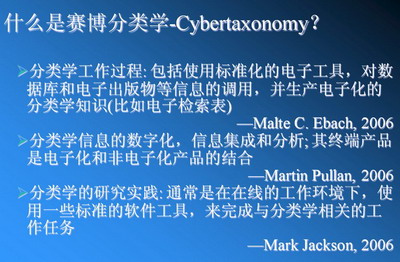
Cybertaxonomy(taxonomy): The fusion of taxonomy with cyberinfrastructure will transform descriptive taxonomy, creating a modern, efficient science to confront the biodiversity crisis. Cybertaxonomy will enable international teams of taxon experts, museums and herbaria to create and test taxonomic knowledge to assure humanity’s access to reliable information about earth’s species. The IISE and its partners are forging cybertaxonomy as the next logical link in a chain of scholarship unbroken since the time of Linnaeus.
The challenge is immense: discovering and describing millions of unknown species while at the same time continually critically testing 1.8 million already named species. International “knowledge communities,” each focused on a major taxon, will assemble and continually improve and expand all that is known of our world’s species.
We are conceiving a taxonomy-specific cyberinfrastructure that will become a worldwide “species observatory” capable of opening access to museum specimens, archived literature, collection data, digital instrumentation and colleagues to vastly expedite descriptive taxonomy. Resultant taxon “knowledge banks” will be the 21st century equivalent of revisions and monographs… the “high throughput” species testing mechanisms of the past. Digital tools, instruments and robots can ease constraints on nearly every phase of taxonomy from collecting and preparing specimens to sharing what is known through user-defined portals such as the Encyclopedia of Life (www.eol.org).
Knowing earth’s species and their myriad characters are fundamental to both evolutionary and environmental biology. The costs of building this new taxonomy are insignificant by comparison to the costs of ignorance as we face the biodiversity crisis.
The IISE will focus on four inter-related areas:
(1) Species Inventories and Collection Development;
(2) Revisionary Taxonomy and Monography;
(3) Cyberinfrastructure; and
(4) the History and Philosophy of Taxonomy